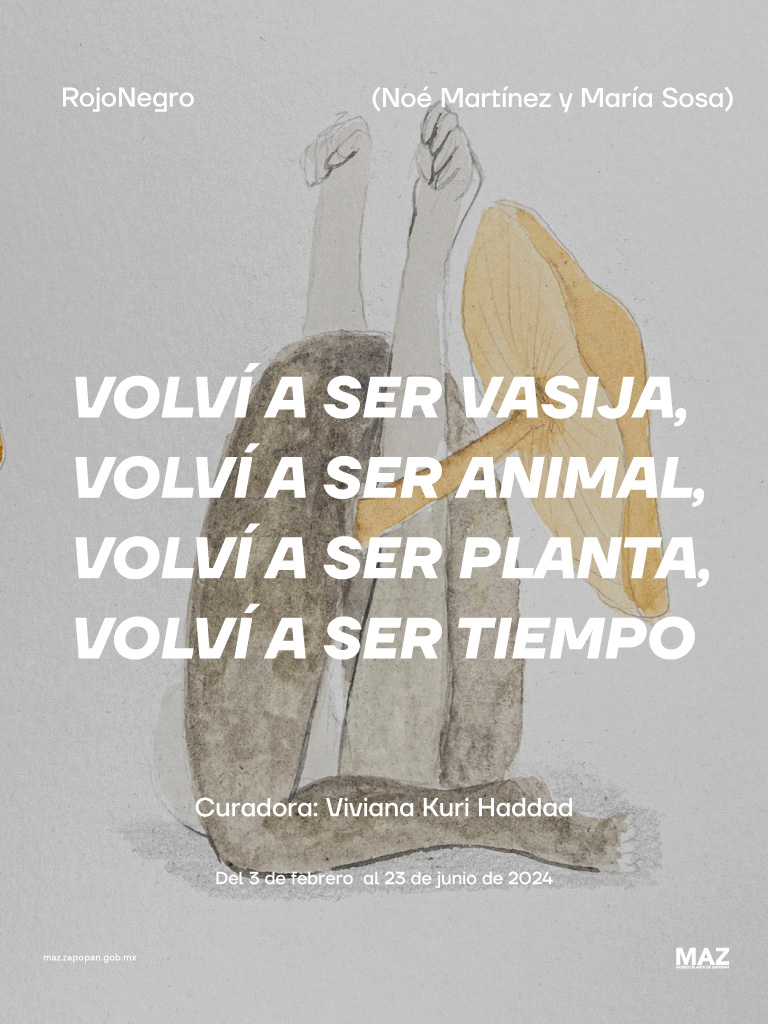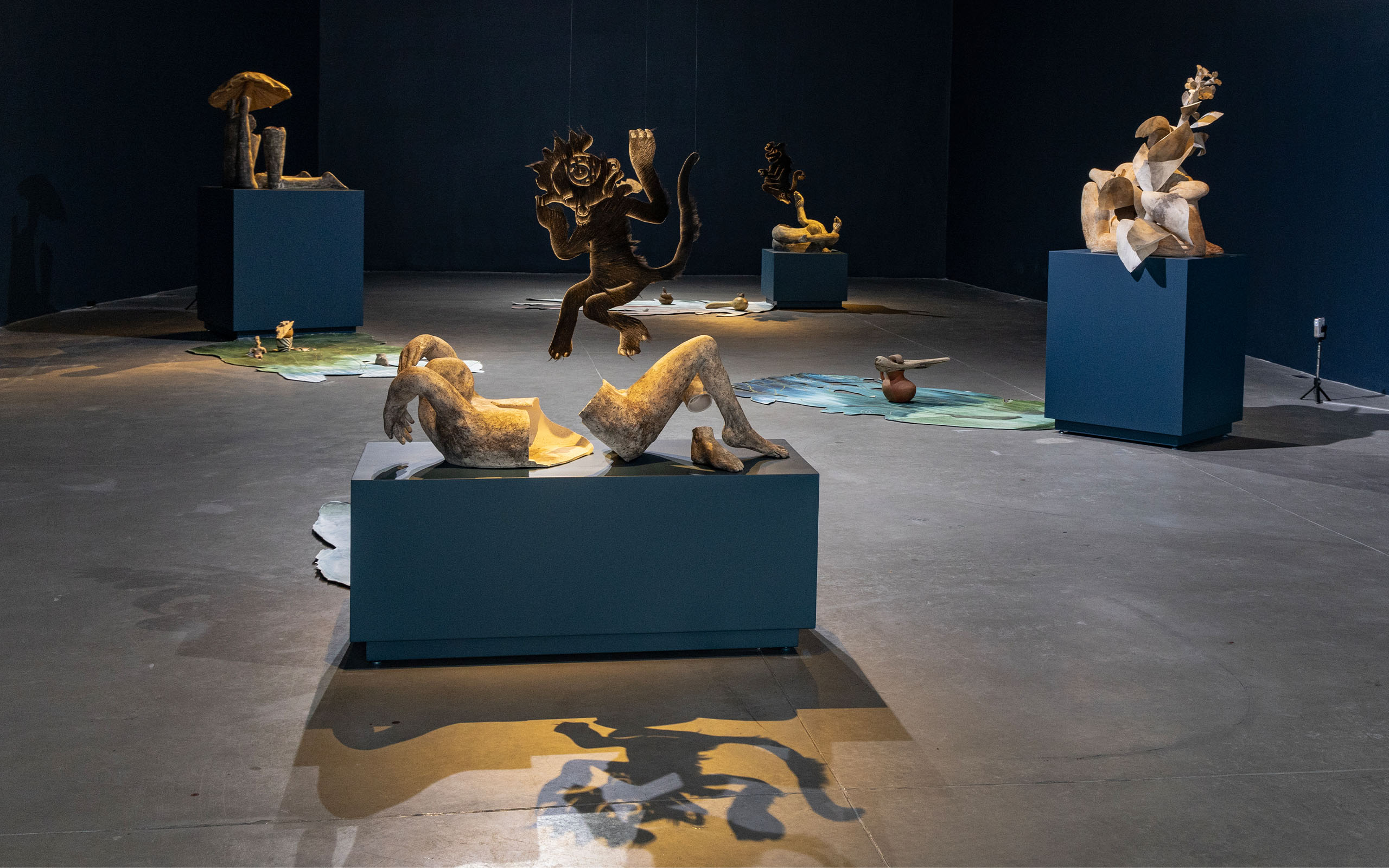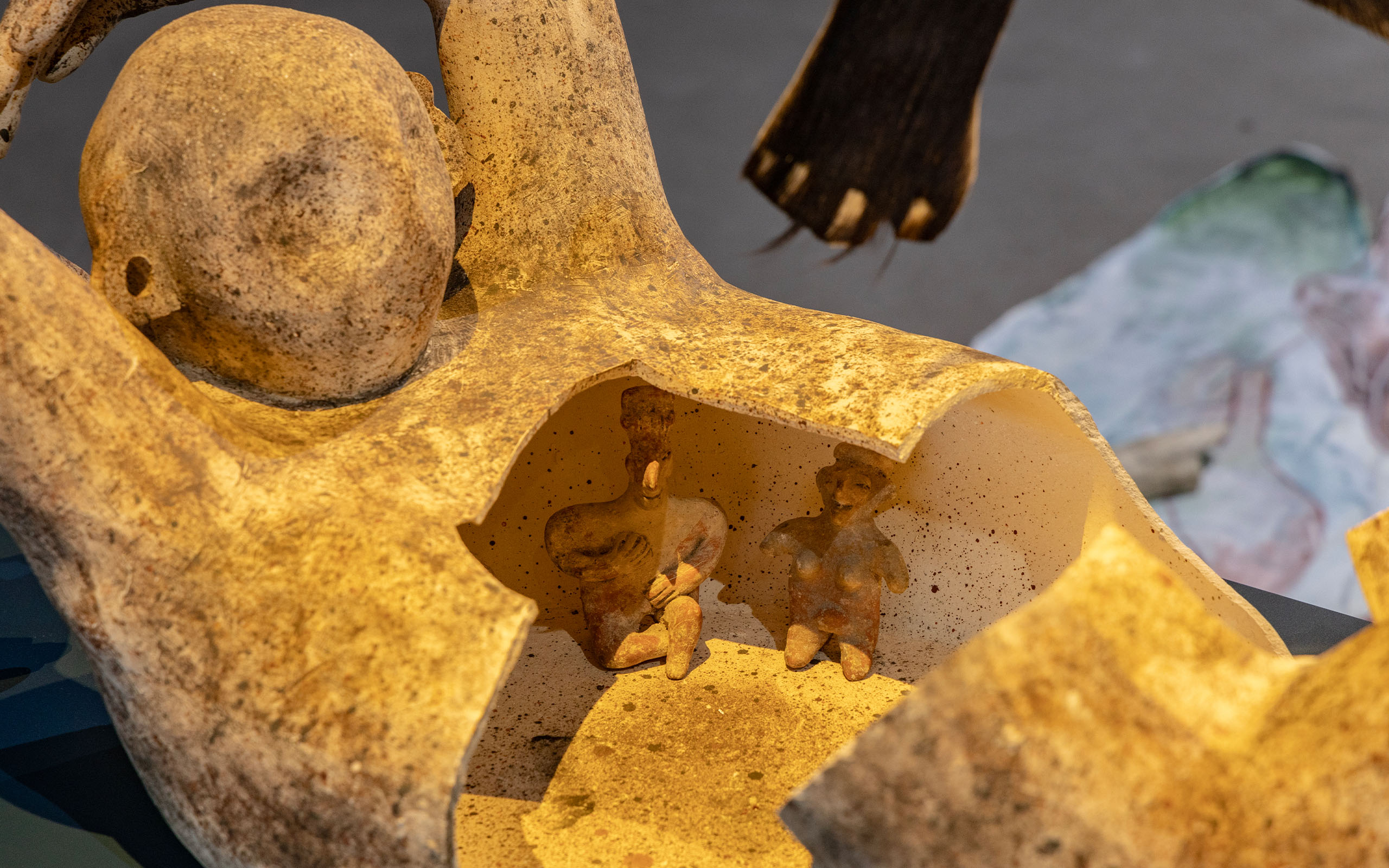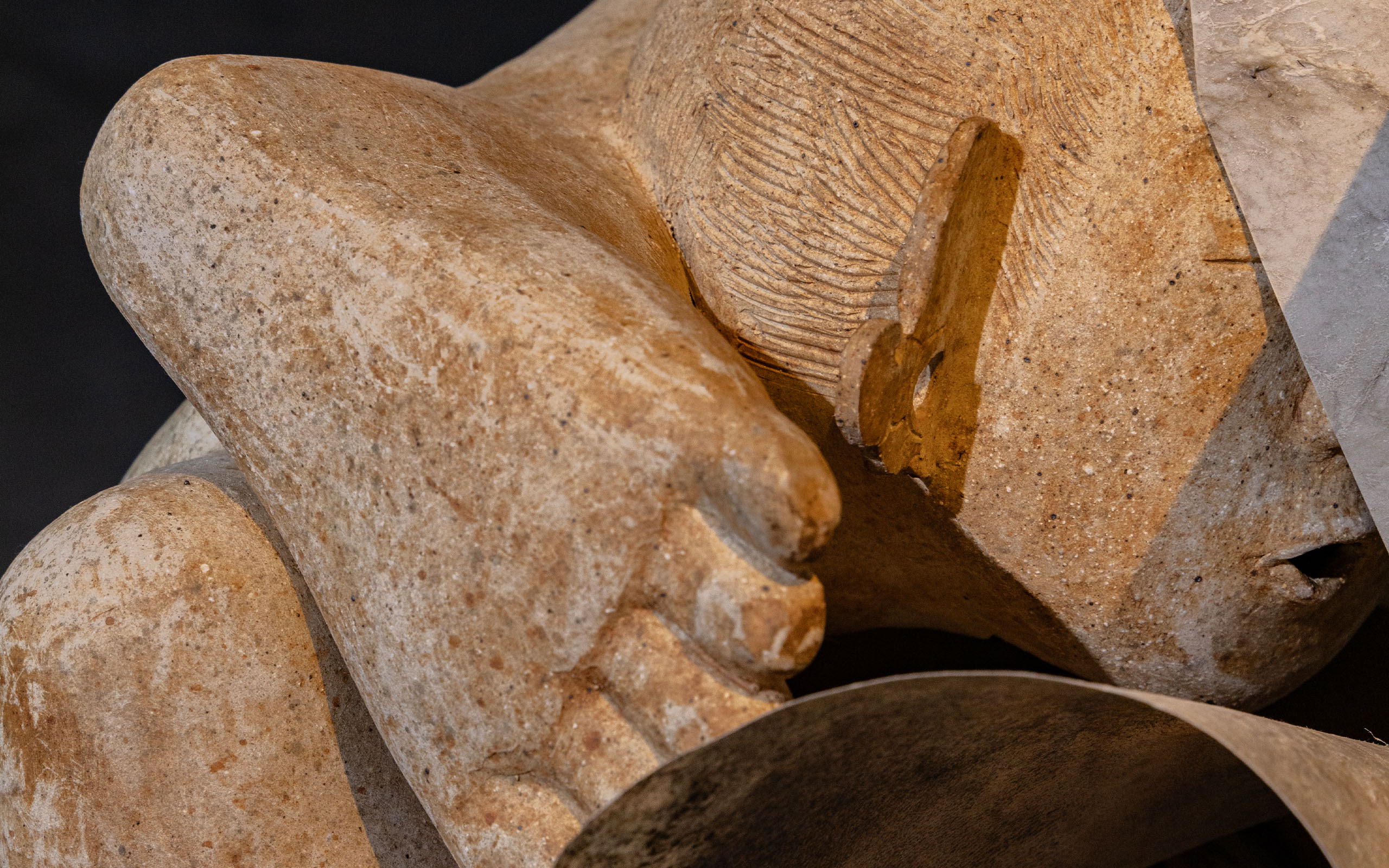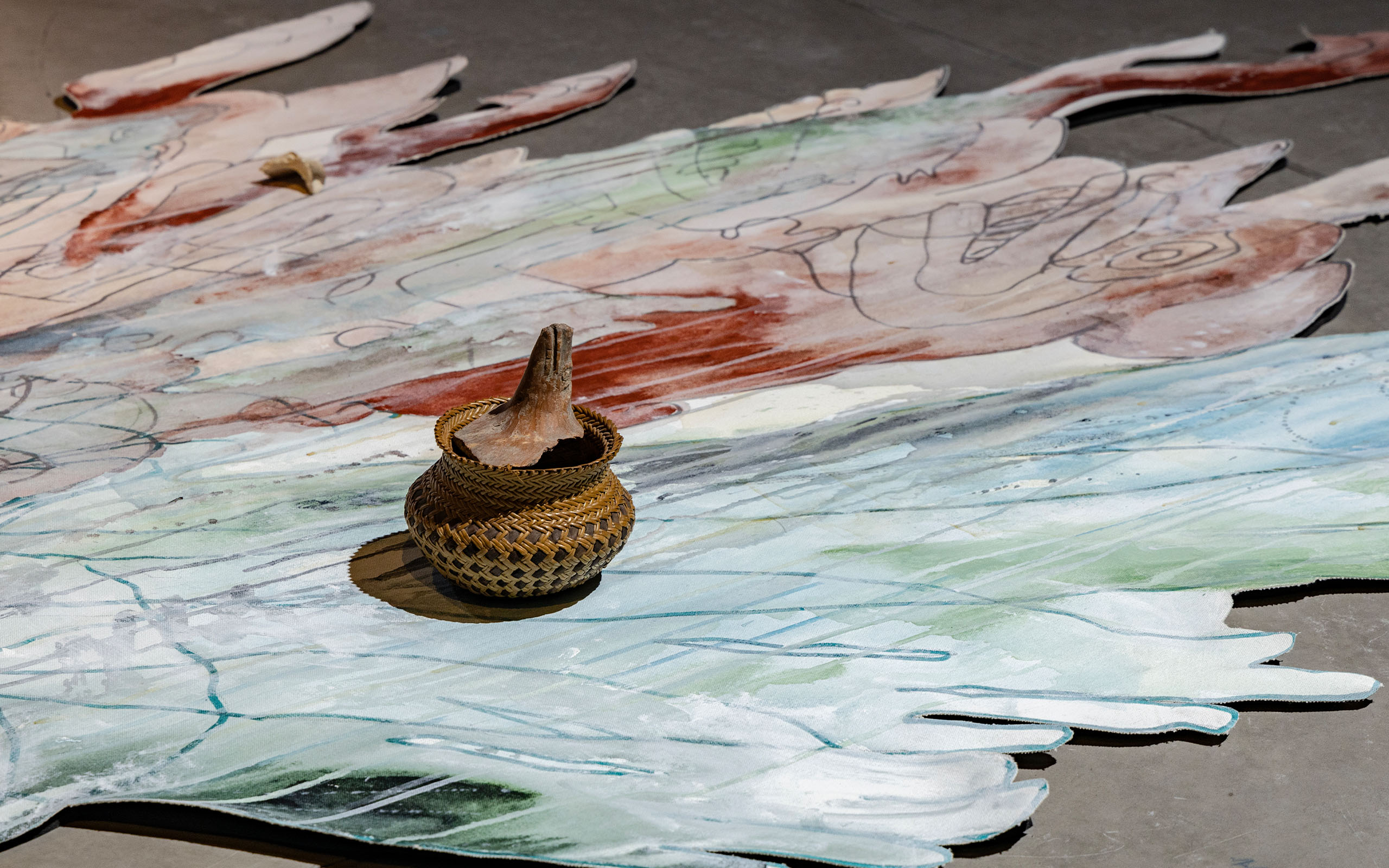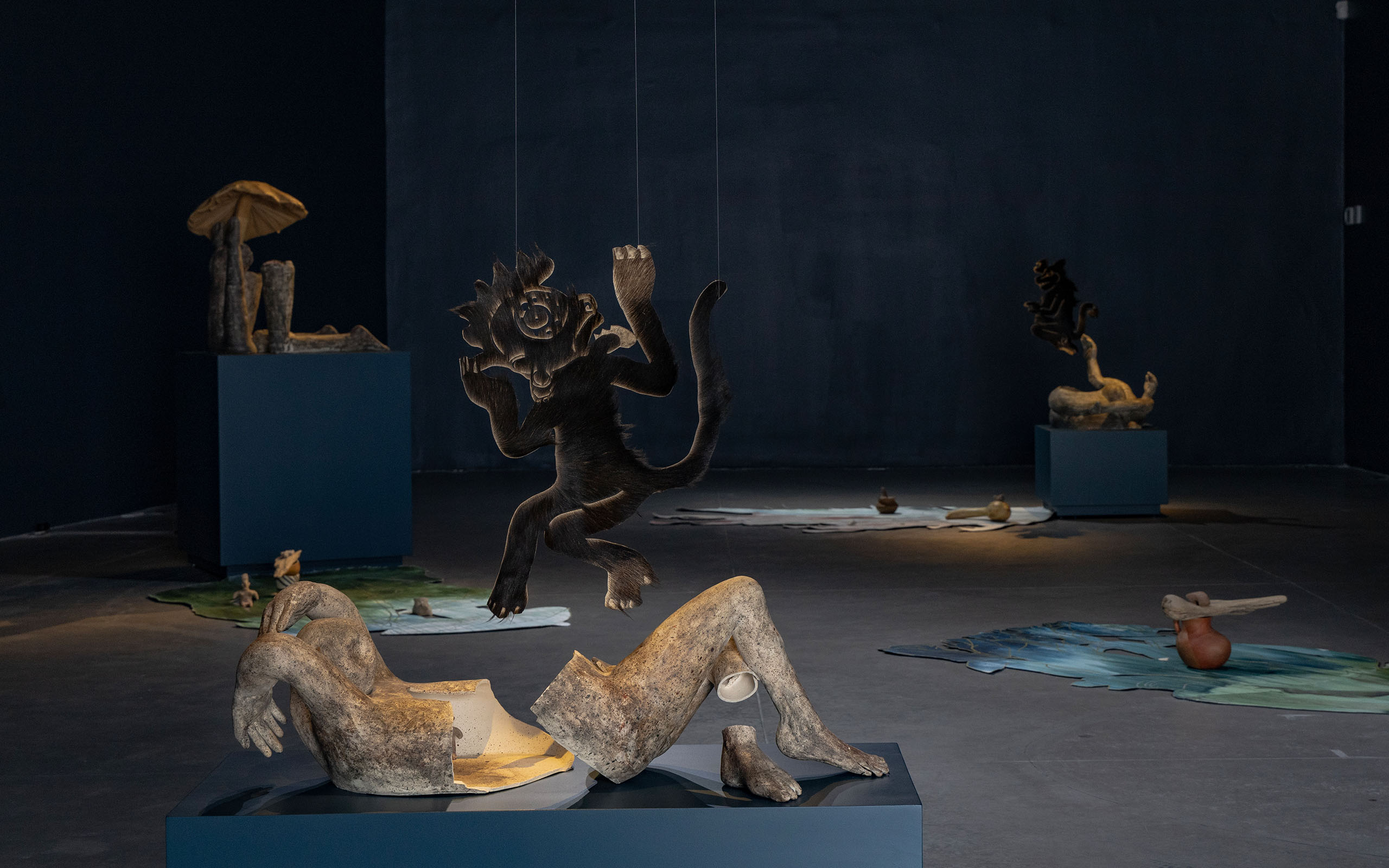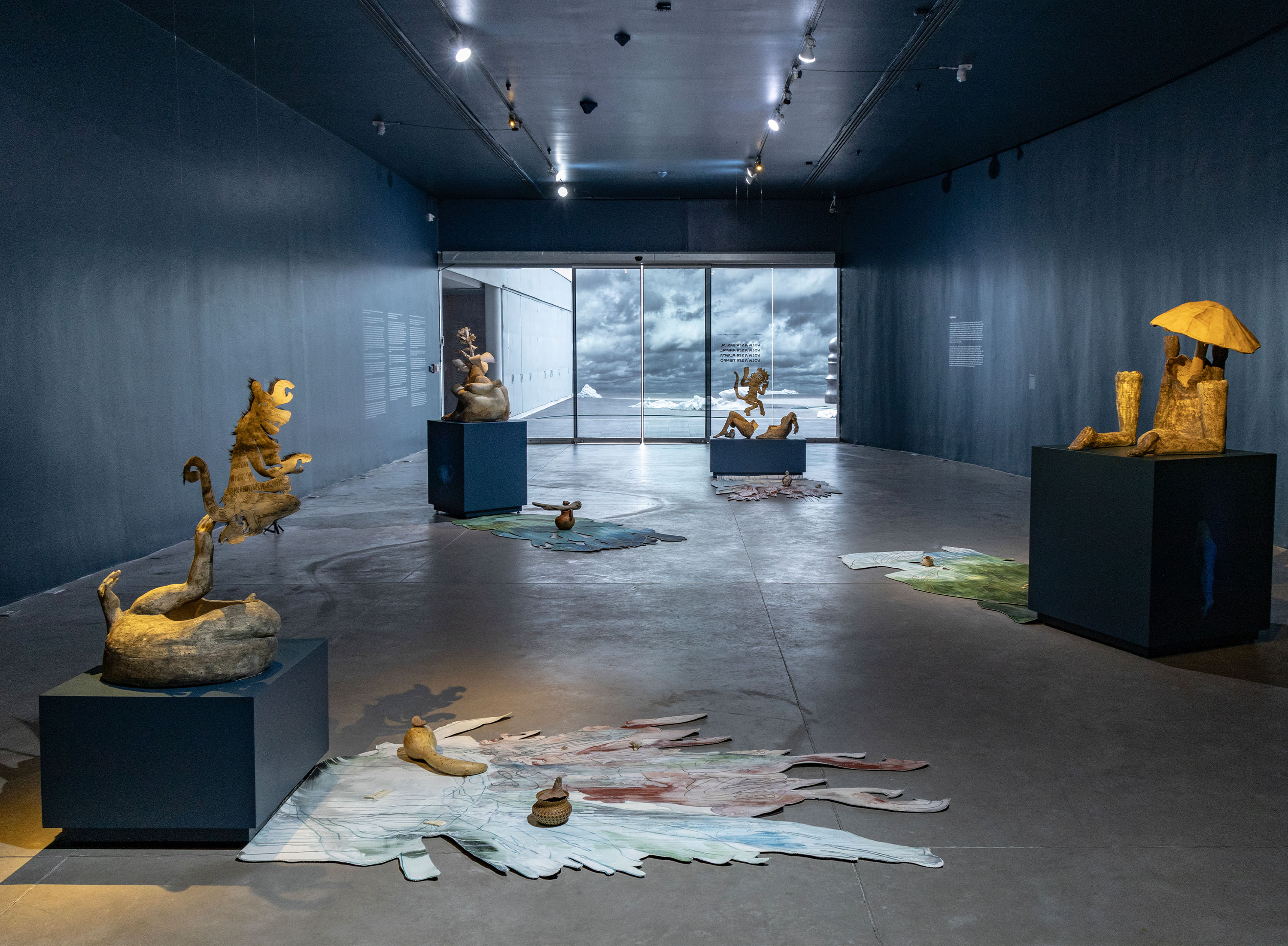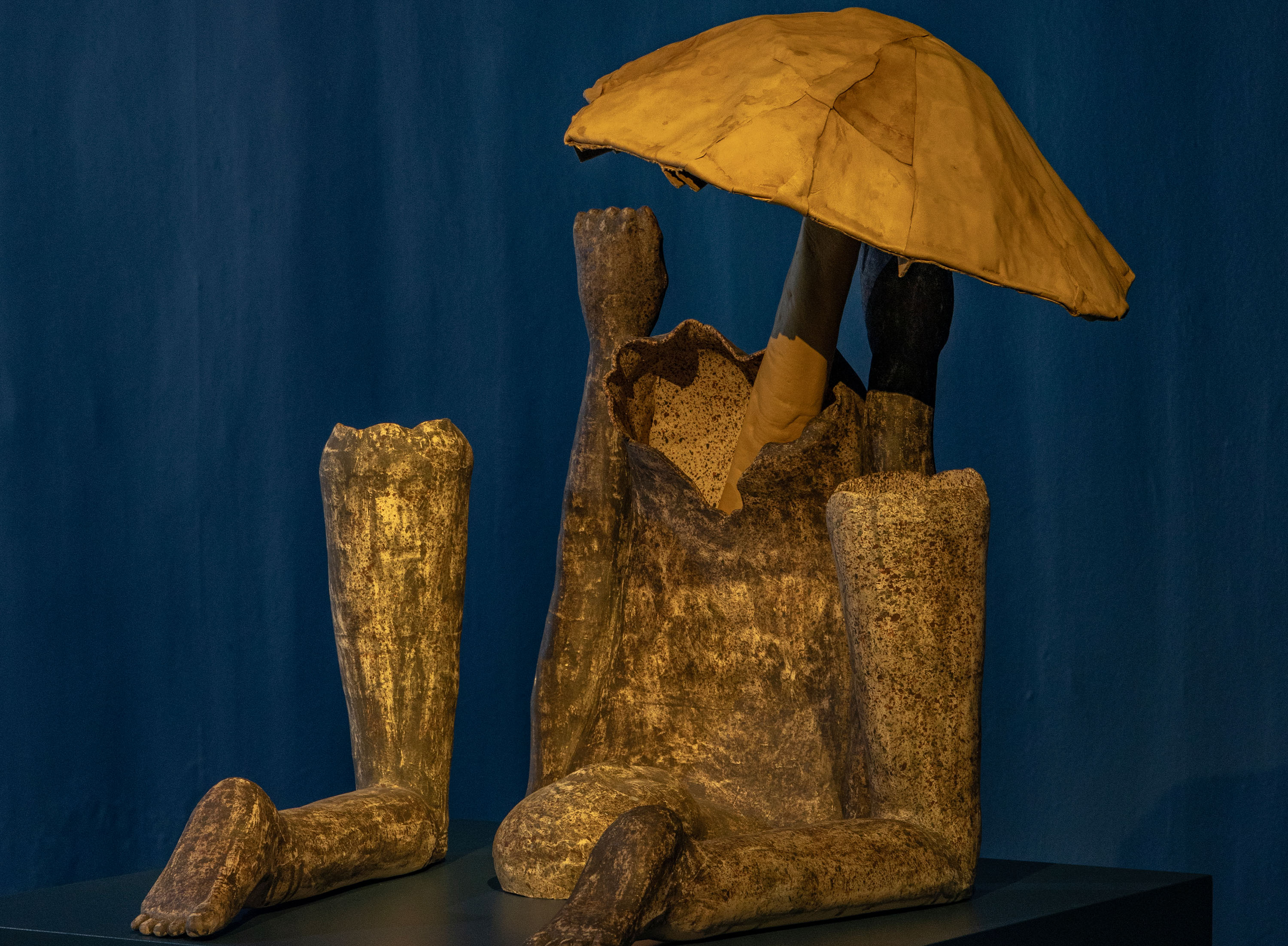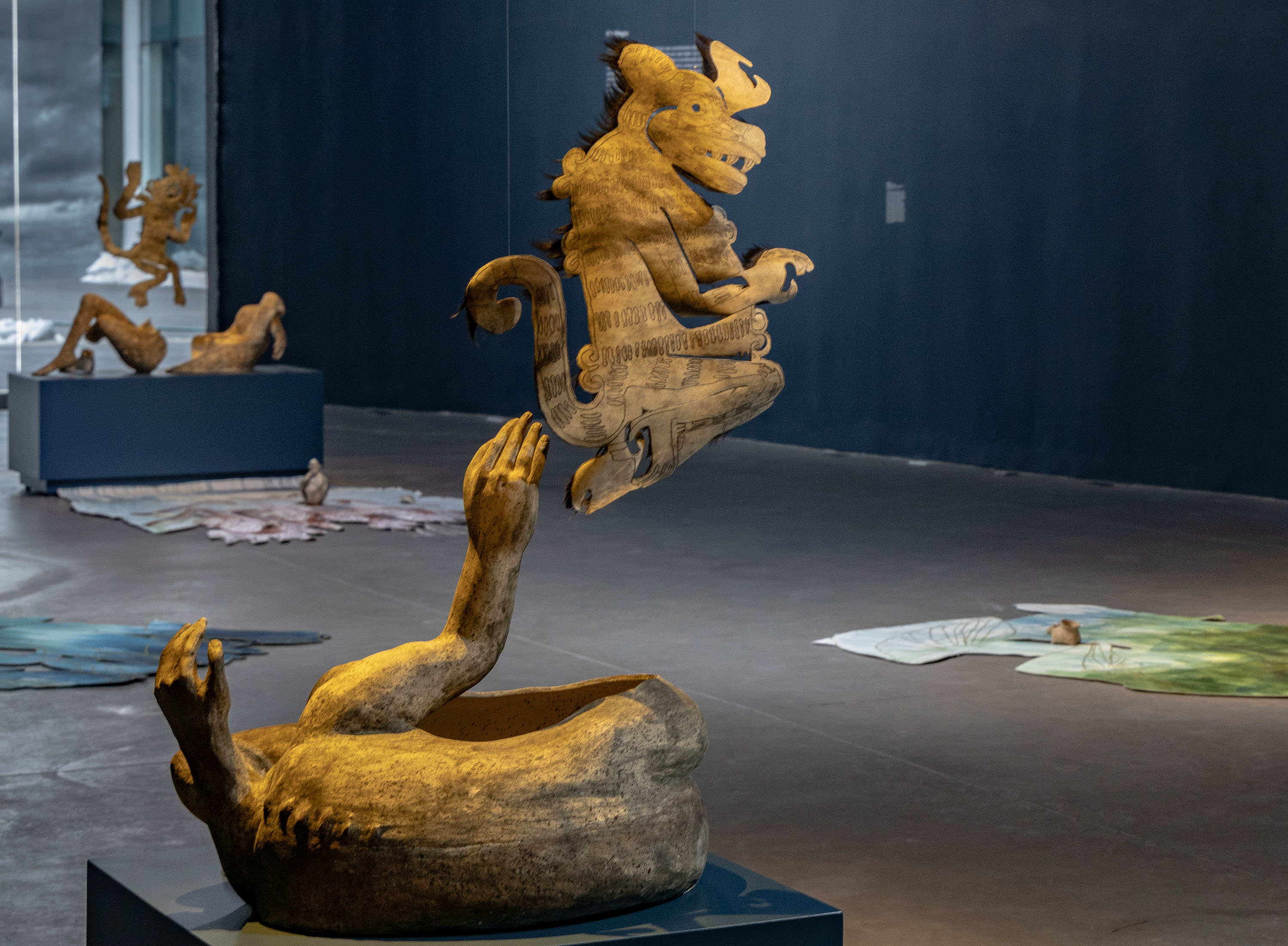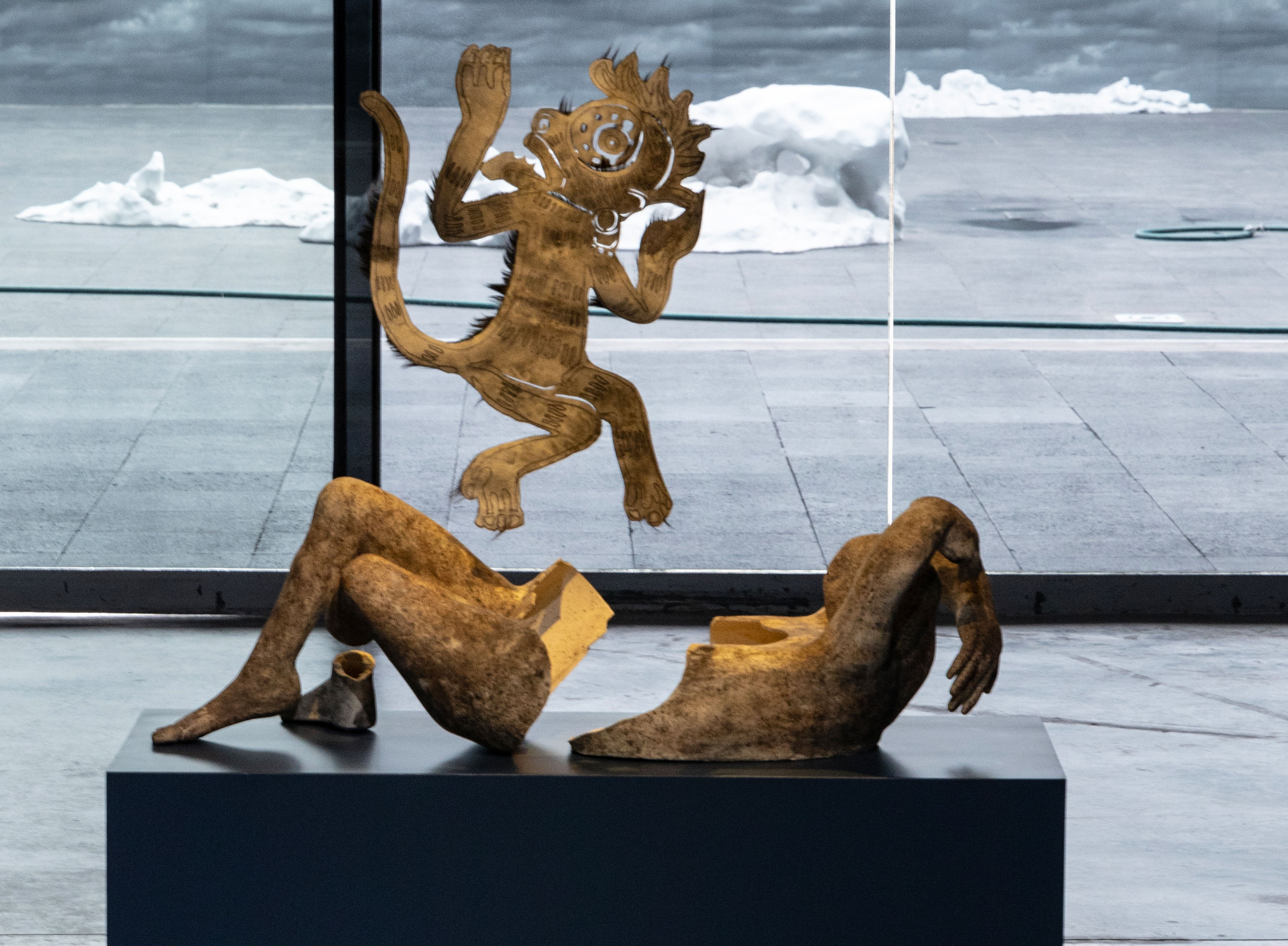Once Again I Was Vessel, I Was Animal, I Was Plant, I Was Time — RojoNegro
(Noé Martínez y María Sosa)
Curator: Viviana Kuri Haddad
From February 3rd to June 23rd, 2024
RojoNegro
In ancient Mesoamerica, the four cardinal directions were identified symbolically with the colors of the different types of maize found in each region. Working through the body, RojoNegro explores how their bodies were born and raised and grew and how they carry with them the history of other bodies originating in a specific geography. The name of the duo alludes to the cardinal directions corresponding to its two members. Negro (black) corresponds to western Mexico, in allusion to the Purépecha ancestors of María Sosa, and Rojo (red) to the north, to the Huasteca region of San Luis Potosí, the ancestral homeland of Noé Martínez. The name also evokes the notion of the sacred ink used in the making of many codices and pieces of earthenware, where red and black borders mark the limits of the universe, the frontiers between the visible and the invisible, and the different strata of reality.
RojoNegro (artists María Sosa and Noé Martínez) in Conversation with Curator Viviana Kuri
The concepts of nagualism and tonalism often arose in our conversations about the exhibition. Although there is no precise anthropological definition of these concepts, they do constitute, for the artists, a very interesting motor for exploring their ideas.
According to historian Alfredo López Austin, the concept of the nagual is complex, since there are different versions of the figure among various peoples in Mexico, involving very different ideas in each case. One element they all share, however, is the notion that absolutely everything is animate: everything has multiple souls within it and a divine component. So that relations can be established between distinct universes or societies, such as those of humans, animals, things, or nature in general. The explanation of how a god enters into water, or into fire, or into a person or an object, exists in another time of a different substance: in the time of myth, where there is an interplay of gods, a time whose past is never lost, because it is pure present. Thus, the gods are protean, without fixed characteristics: they constantly change and in this state of constant change they have adventures. Other beings that undergo modifications can be explained by this interplay of the gods.
NOÉ: We have sought to understand the body through a tool that does not necessarily belong to the Western tradition, in terms both of our artistic practices, using our own bodies, and of the forms by which we represent them.
MARÍA: The difference between nagualism and tonalism is not at all clear: they are often referred to as “complementary entities.” In fact, the limits dividing their meanings are often blurred, but everything basically has to do with the expansion of the self, the expansion of the person into other entities, whether animals, or meteorological phenomena, or instruments, or even days, numbers, or times. It is this expansion of the personal self that fascinates us, because it seems to contradict the Cartesian view of the self.
NOÉ: And to begin to understand that there is a dynamic of different persons within our personal self. For us, that can give meaning to what we see around us and experience right now. It is a need to understand that there is a very personal, very internal form, which comes of our need for emotional involvement, but also many social processes that we encounter and are unable to explain by means of the tools of our Western cultural baggage. To think that the body is in contradiction or is inhabited by different entities, but it also makes you think about the history undergone by the body, about possible colonial traumas, about whether your nagual or tonal may be linked to meteorological effects, about our relationship to nature, to thunder or to wind or to seeds. In a way, therefore, our projects generally extend over long periods of time and go deeply into our own lives.
MARÍA: The exploration of the soul-entities that accompany us is very deep and very extensive, so for the exhibition we present two initial ones for each of us. We seek to observe them and understand them, since it is a very long path, but this also sheds a great deal of light on ourselves. We decided to combine it with two plants (tobacco and mushroom) and two animals (tlacuache [the Mexican mouse opossum] and monkey), in order to have a vegetal element and an animal element, which are part of the explorations we have carried out during active meditation, but also part of our constant dreams and experiences in reality.
